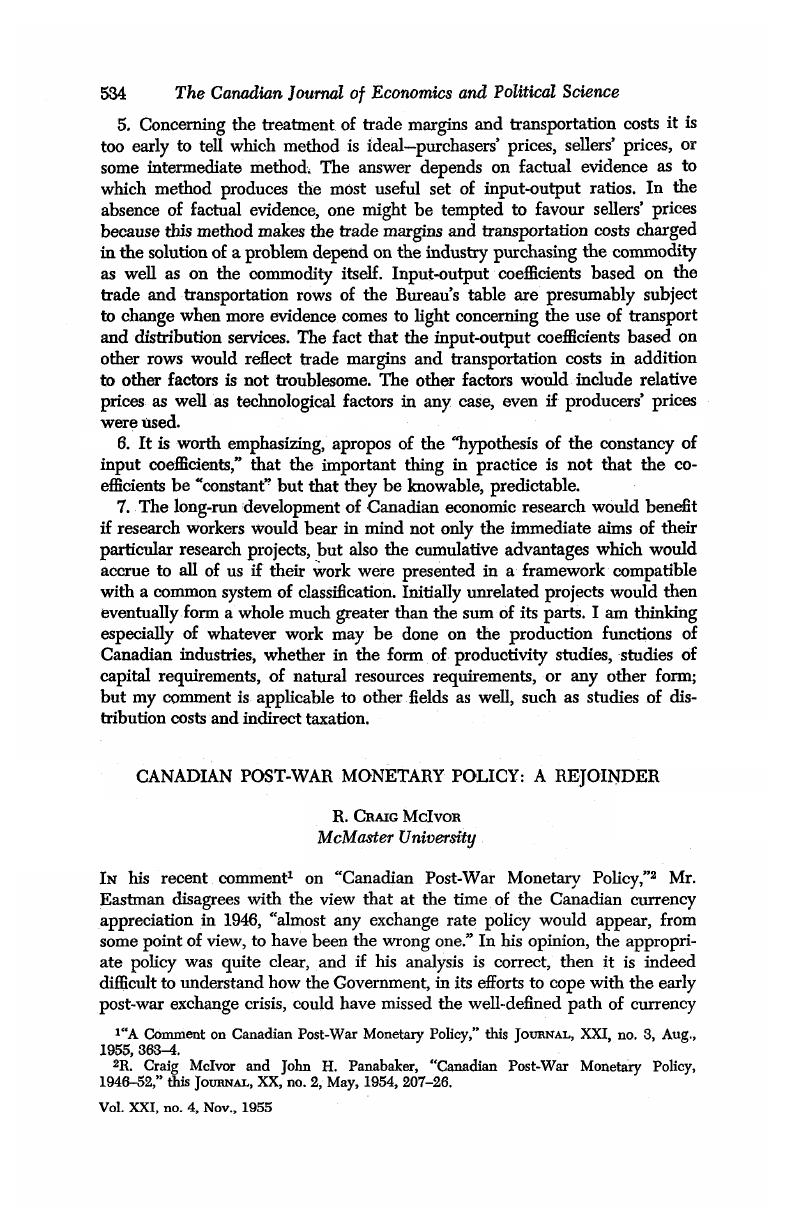No CrossRef data available.
Article contents
Canadian Post-War Monetary Policy: A Rejoinder
Published online by Cambridge University Press: 07 November 2014
Abstract

- Type
- Notes and Memoranda
- Information
- Canadian Journal of Economics and Political Science/Revue canadienne de economiques et science politique , Volume 21 , Issue 4 , November 1955 , pp. 534 - 537
- Copyright
- Copyright © Canadian Political Science Association 1955
References
1 “A Comment on Canadian Post-War Monetary Policy,” this Journal, XXI, no. 3, 08, 1955, 363–4.Google Scholar
2 McIvor, R. Craig and Panabaker, John H., “Canadian Post-War Monetary Policy, 1946–52,” this Journal, XX, no. 2, 05, 1954, 207–26.Google Scholar
3 Because of limited space, the argument is stated somewhat dogmatically, but I hope not unreasonably.
4 During 1946 and 1947, Canada's net capital exports greatly exceeded her substantial current account surpluses, and the exchange crisis assumed the form of a serious loss of reserves, primarily the result of the unexpectedly rapid use of credits which Canada had extended to foreign governments in the early post-war era.
5 In the absence of empirical evidence, one can only attempt some reasonable estimates of the general order of changes. For a brief statement of the official view, see Clark, W. C., “Canada's Postwar Finance,” Canadian Tax Journal, I, no. 1, 01-Feb., 1953, 106 Google Scholar, or, Minister of Finance, Budget Speech, 04 29, 1946, 4.Google Scholar
6 Eastman suggests that because of inflationary conditions and of the process of accumulating inventories in the United States in 1947, the elasticities of U.S. demand for Canadian exports must have been increased above their usual values. Would not the precisely opposite assumption be more appropriate?
7 I assume that by “exchange control” Eastman means direct import controls.
8 The rise in import prices would have been promptly reflected in the domestic price structure: in the case of capital goods, the rise is transmitted via higher costs, while with consumers' goods, there is a rise in the price of the domestically produced import-competing commodity. The rise in export prices would tend to raise the price of such goods available for domestic consumption, and the ability of the prosperous export sector to grant sub-stantial wage increases would lead to comparable adjustments elsewhere in the economy.
9 It is difficult to decide the intended meaning of this statement. If by “a specified amount” is meant “any specified amount” or even “an amount sufficient to halt the drain on reserves,” then the statement is not only incorrect but absurd.
10 On this same point, I am at a loss to understand the significance, in the last sentence of Eastman's comment, of the words “that only [italics mine] served to replenish Canadian reserves of foreign exchange.”
11 We have argued in our earlier discussion in this Journal that a more restrictive monetary policy in these early years would have slowed the progress of inflation and would have restrained the high level of Canadian expenditure which of course contributed greatly to the development of our balance of payments difficulties.


